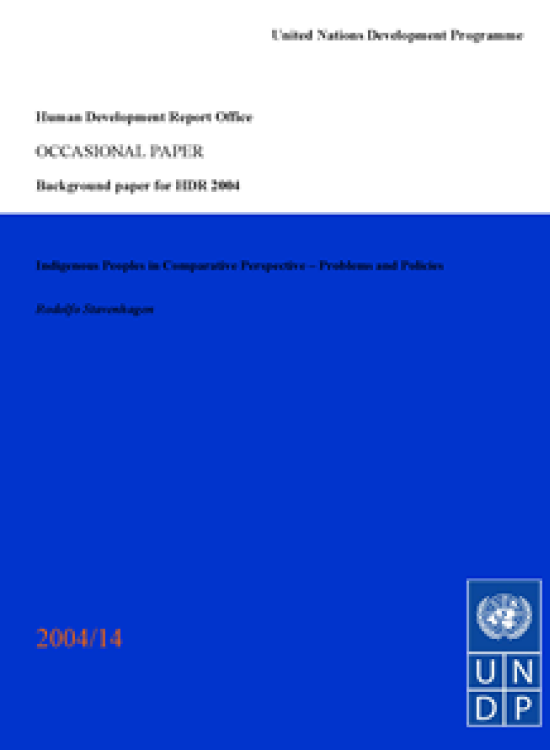Indigenous Peoples in Comparative Perspective
Problems and Policies

Download Report by Language
Document
hdr2004rodolfostavenhagen.pdf
(362.44 KB)
Citation
Stavenhagen, Rodolfo. 2004. Indigenous Peoples in Comparative Perspective: Problems and Policies. New York.
Indigenous Peoples in Comparative Perspective
Problems and Policies
Posted on: January 01, 2004
One of the more widely debated topics involving indigenous peoples and state policies is the ambiguity surrounding the term “indigenous”. There is no internationally agreed upon definition of indigenous peoples. Different states adopt –if at all-- definitions in terms of their particular contexts and circumstances. The term indigenous is frequently used interchangeably with others, such as “aboriginal”, “native”, “original”, “first nations” or else “tribal” or other similar concepts. In some countries no formal designation exists even though there might be general agreement that such populations do in fact inhabit certain areas of the country. In others, the existence of indigenous groups is denied altogether and therefore their definition becomes even more problematic. Yet the absence of an international definition does not prevent constructive action in the protection of the rights of indigenous peoples and the promotion of their development. Whereas at the national level, formal definitions have become more common in recent years, the criteria of membership in an indigenous group, nation or community are not always clearly established.